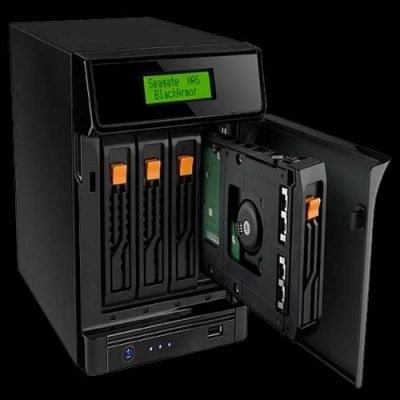A Complete Guide to Restoring Your Important Data with QNAP NAS Data Recovery

Businesses, professionals, and home users who require secure, centralized storage are increasingly utilizing QNAP NAS (Network Attached Storage) devices in today’s digital era. They offer excellent performance, smooth file sharing, and advanced backup options. No matter what causes it—hardware failure, accidental deletion, RAID corruption, or malware attacks—losing important files can be stressful.
In this guide, we’ll go over the required steps, tips, and professional solutions for QNAP NAS data recovery to help you safely and successfully recover your files.
Understanding QNAP NAS Data Loss Circumstances
Understanding the most common causes of data loss on QNAP NAS devices is essential before delving into recovery strategies. This makes it easier to determine the best file recovery technique.
- Accidental Deletion: When files or folders are mistakenly erased without a proper backup.
- RAID Failure: RAID configurations may fail due to disk errors, mismatched drives, or rebuild failures.
- When one or more of the drives in your NAS are physically damaged, a hard drive crash happens.
- Corrupted system files or unsuccessful firmware updates that prevent data access are examples of firmware or software issues.
- Malicious software that encrypts or destroys data is known as ransomware or a virus attack.
- Power Outages: Unplanned shutdowns that contaminate information.
Things to Consider Before Starting QNAP NAS Data Recovery
When data loss happens, timing and action are crucial. To improve your chances of making a full recovery:
- Give up using the NAS. Right away, the deleted files might be overwritten if data is still being written, rendering them unrecoverable.
- Rebuilding the RAID should only be done if you are positive of the drive order and configuration.
- To help you remember where your drives are, label them before removing them.
- Avoid performing physical repairs on your own: Opening damaged drives without the proper tools and cleanroom space can cause irreversible loss.
Methods for QNAP NAS Data Recovery
There are several ways to recover data from a QNAP NAS, depending on the situation and the severity of the problem.
1. Restore using the backup
Restoration is simple if you have synchronized your NAS with cloud storage or configured QNAP’s built-in backup features, such as Hybrid Backup Sync. All you have to do is connect to your backup source to recover the deleted files.
2. Make use of QNAP’s Snapshot & File Station
You can restore files or folders to a previous state using QNAP’s Snapshot feature in case of unintentional deletions. If snapshots are enabled, File Station can assist with browsing and recovering deleted files from shared folders.
3. Software for Data Recovery
Specialized NAS data recovery software can be used in the event that backups or snapshots are not available. You can connect the drives to a computer, rebuild the RAID, and check for lost data using a variety of tools. R-Studio, UFS Explorer, and EaseUS NAS Recovery are a few examples.
4. Expert Data Recovery Services for QNAP NAS
The safest course of action in extreme situations—like multiple drive failures, RAID corruption, or mechanical damage—is to seek professional assistance. Data recovery professionals can recover data from severely damaged drives thanks to their technical know-how, cleanroom facilities, and tools.
Selecting a Skilled QNAP NAS Data Recovery Provider
Here are some qualities to look for in a trustworthy provider if you choose to take the professional route:
- Knowledge of QNAP NAS Systems: They ought to be familiar with the hardware configuration, RAID levels, and file systems of QNAP.
- Cleanroom Facilities: Used for contaminant-free physical drive repair.
- Transparent Pricing: Steer clear of businesses that demand exorbitant diagnostic fees without providing a quote.
- You only pay if your data is successfully recovered with the “No Data, No Fee Policy,” which is a common practice among respectable recovery facilities.
Preventing QNAP NAS Data Loss in the Future
After your data has been restored, it’s time to safeguard yourself against similar incidents in the future. The following are some recommended practices:
- Activate RAID with Redundancy: Use RAID 5, 6, or 10 to increase fault tolerance.
- Establish recurring backups and keep copies on a cloud service or external drive.
- Turn on Snapshots: In the event of unintentional changes, QNAP’s snapshot feature enables a speedy rollback.
- Monitor Drive Health: To identify early indications of failure, make use of QNAP’s integrated HDD/SSD health monitoring.
- Maintain Firmware Updates: Bug fixes and security patches help keep systems from crashing.
Concluding remarks
If you take prompt action and select the appropriate technique, recovering QNAP NAS data doesn’t have to be a nightmare. Avoiding overwriting your lost data is crucial, regardless of whether you restore from a backup, use recoverysquad software, or get expert assistance.
Although NAS systems are effective tools for organizing and keeping vast volumes of data, no storage device is risk-free. You can significantly lower the likelihood of losing important files in the future by combining dependable RAID configurations, frequent backups, and proactive maintenance.
Don’t panic if you’re currently experiencing a significant data loss situation; instead, stop using your NAS, determine what caused it, and follow the safest recovery procedure. Your important data can be revived with the correct strategy.






